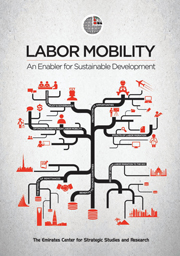Book contents
- Frontmatter
- Contents
- Figures and Tables
- Abbreviations and Acronyms
- Foreword
- Introduction
- 1 The Development Impacts of Temporary Migration and the Protection vs. Opportunities Trade-off
- 2 The Economic Development Benefits of Human Mobility to Source Countries
- 3 The Effects of Remittances
- 4 Recessions and Remittances in Home and Host Countries: An Overview
- 5 Seize the Spotlight: A Case for GCC Engagement in Research on the Effects of Labor Migration
- 6 Migration Policy and Governance in the GCC: A Regional Perspective
- 7 Optimizing benefits from Labor Mobility: The Case for Research Collaboration between Bangladesh and the GCC
- 8 Drivers of Development: The Impact of Indian Labor Migration to the GCC
- Contributors
- Notes
- Bibliography
- Index
4 - Recessions and Remittances in Home and Host Countries: An Overview
Published online by Cambridge University Press: 05 September 2014
- Frontmatter
- Contents
- Figures and Tables
- Abbreviations and Acronyms
- Foreword
- Introduction
- 1 The Development Impacts of Temporary Migration and the Protection vs. Opportunities Trade-off
- 2 The Economic Development Benefits of Human Mobility to Source Countries
- 3 The Effects of Remittances
- 4 Recessions and Remittances in Home and Host Countries: An Overview
- 5 Seize the Spotlight: A Case for GCC Engagement in Research on the Effects of Labor Migration
- 6 Migration Policy and Governance in the GCC: A Regional Perspective
- 7 Optimizing benefits from Labor Mobility: The Case for Research Collaboration between Bangladesh and the GCC
- 8 Drivers of Development: The Impact of Indian Labor Migration to the GCC
- Contributors
- Notes
- Bibliography
- Index
Summary
The global recession of 2009 affected destination countries the world over, including those of the GCC. Regional variations in the expected response of remittance flows to an economic crisis abroad lead to an interesting question: why do the remittance receipts of some countries fall markedly during cyclical slowdowns or contractions in the major country/region of destination for their migrants, whereas no such decline is observed in the receipts of other developing countries facing similar external shocks? This paper argues that the key to answering this question may lie with the synchronism – or lack thereof – of upturns and downturns in the level of economic activity over the business cycles of countries at each end of a migration corridor, coupled with the predominant motive behind the remitting decisions of migrants.
Migration of natives who seek and find employment abroad reduces the high unemployment rates typically encountered by surplus-labor countries in the developing world. It also helps boost the household income of the families emigrant workers leave behind, as they remit part of their earnings abroad back home. The total remittances these emigrants send back to their countries of origin often reach sizable amounts, helping to relax the hard currency constraints facing these countries.
Official remittances receipts have become a more important source of foreign exchange than private debt and portfolio equity flows, official development assistance (ODA) receipts, and even foreign direct investment FDI for many developing countries.
- Type
- Chapter
- Information
- Labor MobilityAn Enabler for Sustainable Development, pp. 87 - 102Publisher: Emirates Center for Strategic Studies and ResearchPrint publication year: 2013



